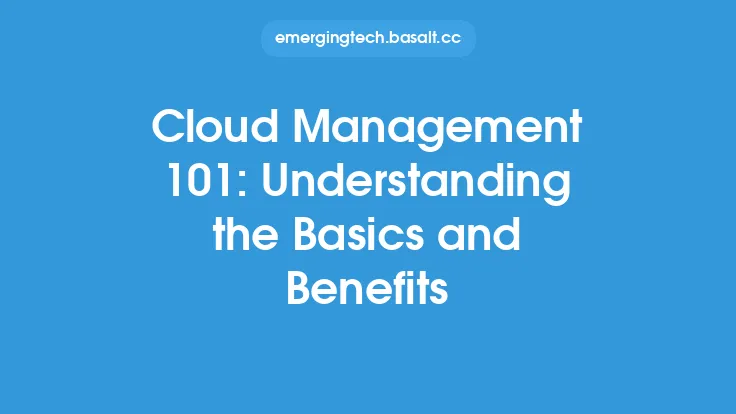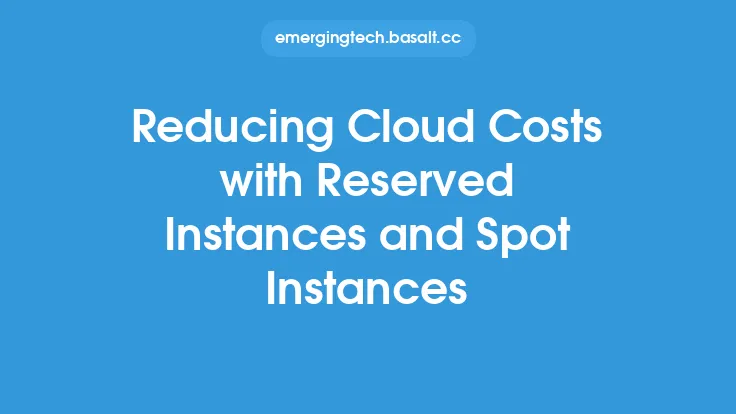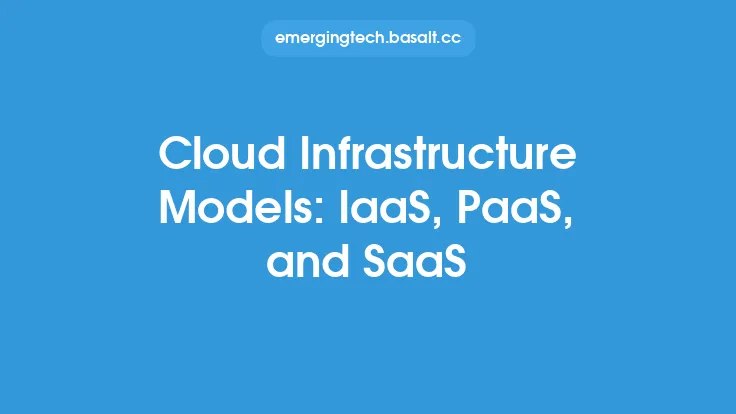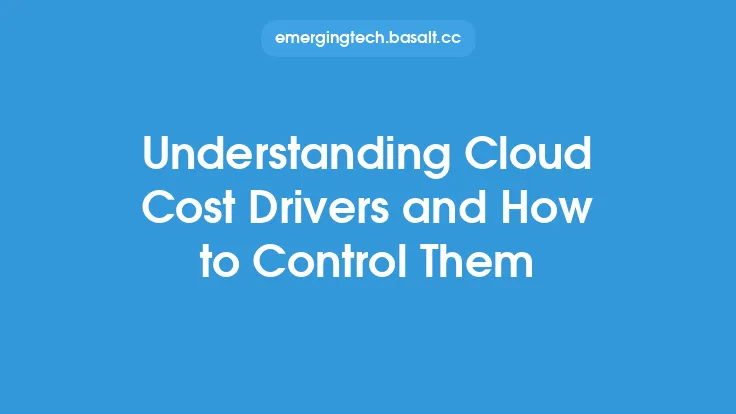Cloud storage has become an essential tool for individuals and businesses alike, providing a convenient and scalable way to store and access data from anywhere. However, with the numerous cloud storage providers and pricing models available, it can be challenging to understand the costs associated with cloud storage. In this article, we will delve into the world of cloud storage pricing models and costs, exploring the different types of pricing models, factors that affect costs, and strategies for optimizing cloud storage expenses.
Cloud Storage Pricing Models
Cloud storage pricing models vary from provider to provider, but most fall into one of the following categories: pay-as-you-go, subscription-based, or tiered pricing. Pay-as-you-go models charge users based on the amount of storage used, while subscription-based models offer a fixed amount of storage for a flat monthly or annual fee. Tiered pricing models, on the other hand, offer different levels of storage at varying price points. Understanding the pricing model used by a cloud storage provider is crucial in estimating costs and selecting the most suitable option.
Factors Affecting Cloud Storage Costs
Several factors can impact cloud storage costs, including the amount of storage used, data transfer rates, and the level of redundancy and availability required. The type of data being stored, such as videos or images, can also affect costs due to varying storage requirements. Additionally, the location of the data center and the level of security and compliance required can influence pricing. It is essential to consider these factors when evaluating cloud storage providers and pricing models to ensure that the chosen solution meets specific needs and budget constraints.
Data Storage and Retrieval Costs
Data storage and retrieval costs are a significant component of cloud storage expenses. These costs are typically calculated based on the amount of data stored and the frequency of data retrieval. Providers may charge for data storage on a per-gigabyte or per-terabyte basis, while data retrieval costs may be based on the number of requests or the amount of data transferred. Understanding data storage and retrieval costs is vital in estimating the total cost of ownership for cloud storage and identifying opportunities for cost optimization.
Data Transfer and Bandwidth Costs
Data transfer and bandwidth costs are another critical aspect of cloud storage pricing. These costs are incurred when data is transferred into or out of the cloud storage environment, and they can add up quickly, especially for large datasets or high-traffic applications. Providers may charge for data transfer on a per-gigabyte or per-terabyte basis, or they may offer unlimited data transfer as part of a subscription-based plan. It is essential to consider data transfer and bandwidth costs when evaluating cloud storage providers and pricing models to ensure that the chosen solution meets specific needs and budget constraints.
Additional Costs and Fees
In addition to data storage, retrieval, and transfer costs, there may be other fees and charges associated with cloud storage. These can include fees for data processing, analytics, or machine learning services, as well as charges for support, maintenance, and security. Some providers may also charge for data migration or import/export services, while others may offer these services for free. Understanding these additional costs and fees is crucial in estimating the total cost of ownership for cloud storage and identifying opportunities for cost optimization.
Strategies for Optimizing Cloud Storage Costs
Optimizing cloud storage costs requires a deep understanding of the pricing model and the factors that affect costs. One strategy for reducing costs is to right-size storage capacity, ensuring that only the necessary amount of storage is used. Another approach is to use data compression or deduplication techniques to reduce the amount of data stored. Additionally, selecting a provider that offers a pay-as-you-go pricing model or a subscription-based plan with unlimited data transfer can help reduce costs. It is also essential to monitor usage and adjust storage capacity as needed to avoid unnecessary costs.
Best Practices for Managing Cloud Storage Costs
To manage cloud storage costs effectively, it is essential to follow best practices such as monitoring usage, optimizing storage capacity, and selecting the right pricing model. Additionally, considering the total cost of ownership, including additional costs and fees, is crucial in estimating the true cost of cloud storage. It is also essential to evaluate the level of redundancy and availability required, as well as the type of data being stored, to ensure that the chosen solution meets specific needs and budget constraints. By following these best practices, individuals and businesses can optimize their cloud storage costs and ensure that their cloud storage solution is scalable, secure, and cost-effective.
Conclusion
Cloud storage pricing models and costs can be complex and challenging to understand, but by considering the different types of pricing models, factors that affect costs, and strategies for optimizing cloud storage expenses, individuals and businesses can make informed decisions about their cloud storage needs. By following best practices for managing cloud storage costs and selecting the right provider and pricing model, users can ensure that their cloud storage solution is scalable, secure, and cost-effective, meeting their specific needs and budget constraints. As the cloud storage market continues to evolve, it is essential to stay informed about the latest pricing models and cost optimization strategies to ensure that cloud storage solutions remain a valuable and affordable tool for individuals and businesses alike.





